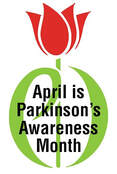RCMS News and Events
|
Stay Connected with RCMS
Scroll down to see the latest updates and click the button below to subscribe to The Pulse to get regular updates from RCMS directly to your email inbox. |
|
Stay Connected with RCMS
Scroll down to see the latest updates and click the button below to subscribe to The Pulse to get regular updates from RCMS directly to your email inbox. |
 Parkinson's disease (PD) is a neurodegenerative disorder that affects predominately dopamine-producing (“dopaminergic”) neurons in a specific area of the brain called substantia nigra. Symptoms generally develop slowly over years. The progression of symptoms is often a bit different from one person to another due to the diversity of the disease. People with PD may experience:
The cause remains largely unknown. Although there is no cure, treatment options vary and include medications and surgery. While Parkinson’s itself is not fatal, disease complications can be serious. The Centers for Disease Control and Prevention (CDC) rated complications from PD as the 14th cause of death in the United States. The first step to living well with Parkinson’s disease is to understand the disease and the progression: It is possible to have a good to great quality of life with PD. Working with your doctor and following recommended therapies are essential in successfully treating symptoms by using dopaminergic medications. People with PD need this medication because they have low levels or are missing dopamine in the brain, mainly due to impairment of neurons in the substantia nigra. It is important to understand that people with PD first start experiencing symptoms later in the course of the disease because a significant amount of the substantia nigra neurons have already been lost or impaired. Lewy bodies (accumulation of abnormal alpha-synuclein) are found in substantia nigra neurons of PD patients. Scientists are exploring ways to identify biomarkers for PD that can lead to earlier diagnosis and more tailored treatments to slow down the disease process. Currently, all therapies used for PD improve symptoms without slowing or halting the disease progression. In addition to movement-related (“motor”) symptoms, Parkinson’s symptoms may be unrelated to movement (“non-motor”).People with PD are often more impacted by their non-motor symptoms than motor symptoms. Examples of non-motor symptoms include: apathy, depression, constipation, sleep behavior disorders, loss of sense of smell and cognitive impairment. In idiopathic Parkinson’s disease, progression tends to be slow and variable. Doctors often use the Hoehn and Yahr scale to gauge the progression of the disease over the years. The scale was originally implemented in 1967 and it included stages zero to five, where zero is no signs of Parkinson’s and five is advanced PD. It was later changed to become the modified Hoehn and Yahr scale. Page reviewed by Dr. Ahmad Elkouzi, Movement Disorders Fellow at the University of Florida, a Parkinson’s Foundation Center of Excellence. For more information and resources visit Parkinson's Foundation at: https://www.parkinson.org/ Comments are closed.
|
News & EventsLatest news and information on upcoming events at RCMS Archives
July 2024
Categories |